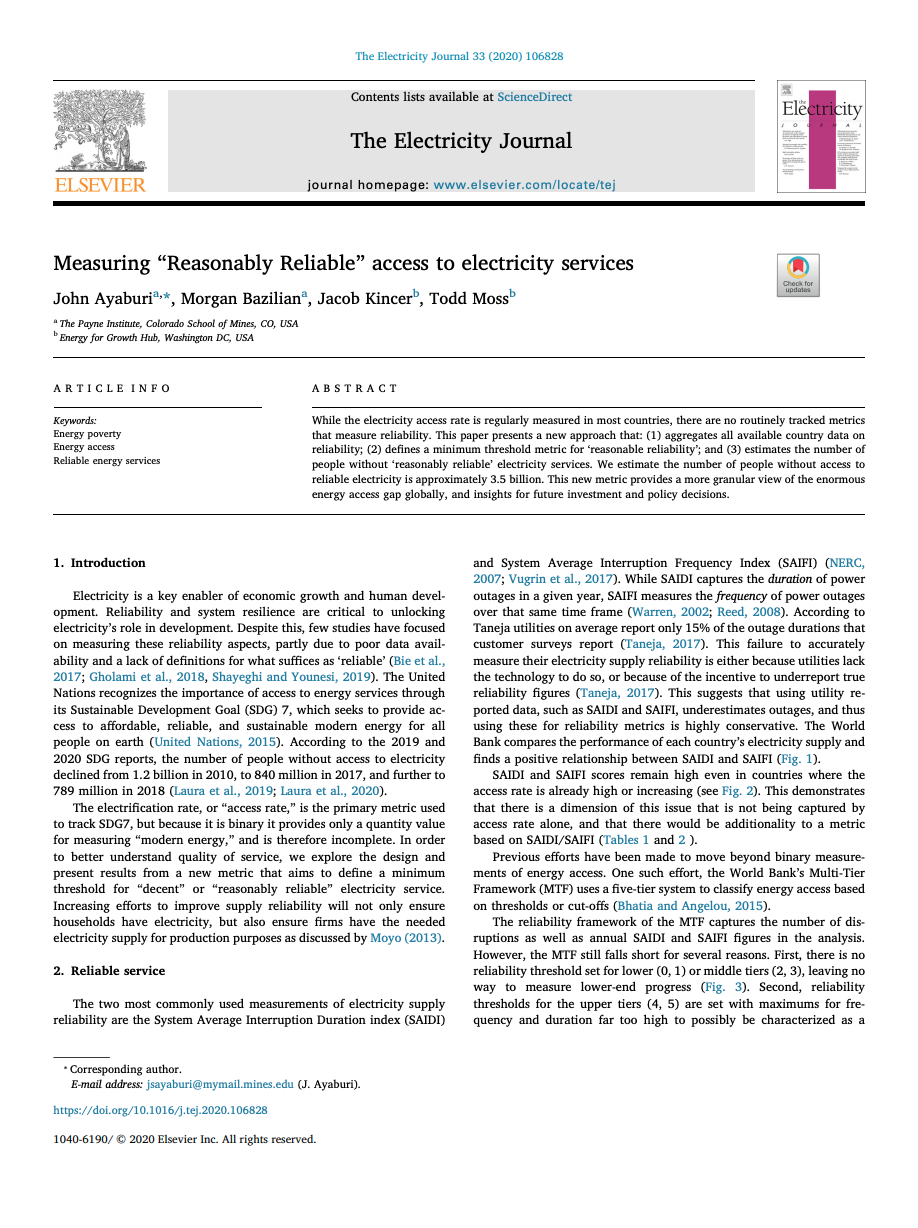
Measuring “Reasonably Reliable” access to electricity services
Autors: John Ayaburi, Morgan Bazilian, Jacob Kincer, Todd Moss
Article published in: The Electricity Journal, vol.33, n.7, Aug-Sept 2020
Title: Measuring “Reasonably Reliable” Access to Electricity Services
Main arguments:
While the official number of the world population living without access to electricity is currently estimated to be 860 million (2019) with a downward trend, we know that this figure mainly measures the existence of a connection to an electricity grid and not availability of an adequate service: the difference may be substantial. To provide a good indicator of access to a reliable electricity services, various estimates have been made over the years.
This new estimate includes data from 179 countries and is wider and more complete than the previous ones and provides a "reasonably reliable" supply indicator, measuring both access (existence of a connection) and continuity of supply (not too many interruptions and not too long) . The indicator defines a supply that does not impose more than 12 interruptions on an average customer per year and a maximum duration of 12 hours of interruption (in industrialized countries the order of magnitude is one interruption and a duration of one hour per year). By choosing more or less demanding thresholds, higher or lower values of the exclusion indicator will be obtained, and discussion is open.
In any case, this composite indicator will provide a better measure of the improvement under way and of its speed, assuming that it is possible to calculate it often enough. The new indicator will be useful in analysing individual regions and countries. Such progress in measurement is also fundamental for monitoring the Sustainable Development Goals.
New estimates:
The study provides a much higher figure than those presented so far: those who do not have access to reasonably reliable electricity supply are 3.5 billion, that is half of the world population and four times the estimate for access. The main discrepancy between the access and the composite indicator is found in countries ravaged by war of guerrilla: here an acceptable service is not even provided to most connected customers, as we can expect.
Open issues:
The authors warn that the composite indicator is likely biased towards optimism, since utilities often underreport outages due to lack of technology or because they have an incentive to do so.
An opposite bias, in the direction of pessimism, is however possible if data collection does not fully cover the increasing share of independent generation of electricity for self-consumption of consumers having no connection to the grid. Just to make an example, Bangladesh is reported having installed 4 million Solar Home Systems covering 12 per cent of total population.
To download the paper please click HERE
